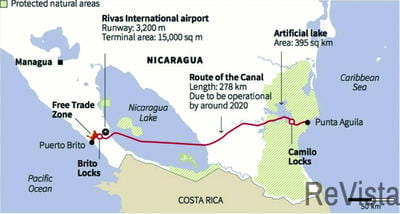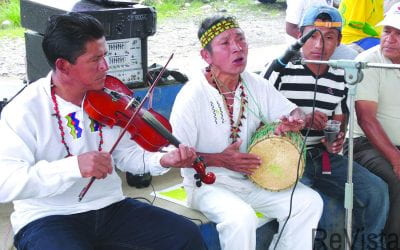China and Latin America Relations
After more than three decades of high rates of economic growth making China the world’s second-largest economy, its government continues to emphasize its status as a developing country. Now the international community is intensely debating China’s role in the global economic and political order. Should China continue to support the existing economic order, which has mostly benefited its rise or should it seek the creation of a new order? What development strategy should the country adopt in the coming decades regarding the world and Latin America?
The first alternative may somehow limit Chinese potential for expansion and the second brings more significant risks and responsibilities as well. These alternatives raise significant questions for Latin America: it has been among the regions receiving a significant percentage of China’s external investments, particularly in the areas of energy and natural resources. China could gradually seek to deter U.S. power and replace it with something similar or entirely new. That would mean exchanging long-established relationships with U.S. partners for others who are not so well known to the Chinese. Will Latin American countries, large or small, move from the sphere of influence of the United States to that of China?
China could also continue to support the existing order and maintain multilateral and bilateral integration and cooperation initiatives, in some way complementing or expanding the existing order. It could still gradually broaden the benefits of a higher international insertion, and power in a balanced manner, without, however, paying for them. In this scenario, Latin American countries may manage the pressures of the United States and China and be able to follow their own path of development.
Uncertainties and challenges of all kinds are present in the role that China must play on the world stage or in global governance. It is possible to develop arguments that support any of these competing views and find data and facts that legitimize them nationally, regionally or globally. Latin American countries must maintain awareness of both Chinese internal and external developments in order to take advantage of the new—and each year stronger—economic and political ties to the region.
The Chinese economy faces increasing challenges, and its international performance can solve some of its problems while creating others. In this context, in late 2013 on a trip to Central Asia and Southeast Asia, President Xi Jinping announced the ambitious Belt and Route Initiative. Later he announced the formation of the Asian Infrastructure Investment Bank (AIIB), open to the contribution of any country. Several countries have adhered to the treaty establishing this Bank, and several others will do so in the coming years demonstrating, to a certain extent, their support for the Initiative.
Likely and unlikely partners must understand the Chinese global strategy for sustainable and “win-win” relationships. In 2016, the outbound direct investment from China surpassed the inbound investment, at US$183.2 and US$126 billion, respectively. In 2015 China became the second more substantial investor in the global economy. In the last five years, outbound mergers and acquisitions have grown 33% per year. The Chinese investment drive should continue due to the discrepancies between the massive accumulated reserves mostly in U.S. Treasury bonds and the investments returns in productive assets (see Yuning Gao, China’s Global Investment: Structure, Route, and Performance. In Direction of Chinese Global Investments: Implications for Brazil, Anna Jaguaribe (coordinator)– Brasília: FUNAG, 2018).
From 2005 to 2016, Chinese outward investments focused on sectors related to energy (38%), metals (14%), real estate (9%), and transport (8%). Africa, Latin America, Australia and certain Asian countries received most of the investments in the areas of energy and natural resources. Europe and the United States, which in the previous years were the general focus of the Chinese State Companies became the focus of investments in services, telecom technology and high-end manufacturing. On average the geographical distribution of Chinese global investments from 2005 to 2016 was 23% to Europe, 17% to the United States, 11% to East Asia and another 30% equally distributed among Australia, South America and West Asian countries. In a declining trend, African nations represent the other 9%.
The amounts of investments and trade patterns are not solely influenced by the country-specific advantages but also by the level of economic development of China. It is also strongly affected by the Chinese foreign policy that from the end of 2013 have been discussed under the idea of building a New Silk Road. Chinese leader Xi Jinping launched The Belt and Road Initiative in 2013 to build up infrastructural connectivity through the high-speed economic development countries of East Asia at one end to the developed European economies at the other end. In the official rhetoric, the initiative is open to any country to participate, but it seems that there are no plans to extend the routes to the Americas.
In the Americas, besides the increasing trends of trade and investments, the Chinese are also leading the studies for a transcontinental railway connecting the Brazilian Atlantic coast to the Peruvian Pacific coast. A much bigger project estimated at US$50 billion is the Nicaragua Canal that rivals the Panama Canal. This project has met strong opposition from locals and environmentalists because of its potential damages to the environment. It has also been delayed by financial constraints of the Hong Kong-based HKND (HK Nicaragua Canal Development) Group. The channel and other projects in Nicaragua, if finished, will give China a major foothold in Central America, a region traditionally influenced by the United States. It is worth noticing that both Panama (2017) and El Salvador (August 2018) have broken formal diplomatic relations with Taipei, switching their allegiance to China.
The goals of Chinese foreign policy—as well the Chinese principles of morality, virtue, tradition, culture and history—are all present in all Chinese government documents and speeches. By carefully reading these documents, we can explore the official rhetoric of the Mao Zedong time of “struggle” and “revolution” to our present days of “peaceful development” to reassure the internal and external community about a “harmonious world.”
It seems that the China external policy is mostly defensive: mainly to prevent from the formation of an anti-Chinese bloc and to focus on internal development. The dynamic and rich Chinese development experience from the death of Mao to its current rising international presence is the most extraordinary political and economic development experience ever seen in human history—exporting its culture through the mushrooming Confucius Institutes in Latin American and other countries as well as building roads and routes abroad.
Hopefully, the goals of the Chinese external policies of sovereign indepen-dence, territorial integrity and national development will be respected while dealing with Latin American large or small countries. These countries must be aware of increased Chinese presence in the region and develop their own strategies of development to improve the standard of living of their population. If poor South and Central American countries are moving from the U.S. sphere of influence to the Chinese one, they must do it wisely. They must be aware that in all win-win relationships with China, or any other country, there will be a bigger winner than the other.
Fall 2018, Volume XVIII, Number 1
Gilmar Masiero is a professor at the University of São Paulo and coordinator of the ProAsia-Asia Studies Program.
Related Articles
From Vendedor to Fashion Designer
English + Español
Korean immigrants in Latin America are shaping and developing fashion economies there. Upon arrival, Korean immigrants to Argentina and Brazil may have been lonely, isolated and confused…
Shared Sentiments Inspire New Cultural Centers
English + Español
In the early afternoon of January 3, 2018, in the mountainous village of Shicang, Zhejiang Province, China, firecrackers burst into the air and flags waved in the wind as a parade of Clan…
Evidence for Hope: Making Human Rights Work in the 21st Century
A Review of Evidence for Hope: Making Human Rights Work in the 21st Century Contemporary Human Rights and Latin America On September 5, 1921, Roscoe “Fatty” Arbuckle, Hollywood’s then best-paid star, attended a party in San Francisco’s St. Francis Hotel, drank...







